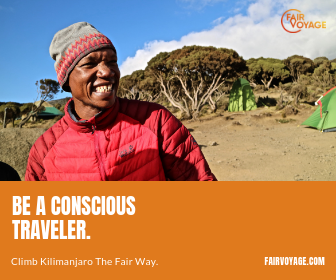I was so scared of freezing during summit night that I spent the better half of a day doing nothing but researching the warmest possible gloves on the entire planet. To cut a long story short, Hestra Army Leather Mitt it had to be.
Gloves versus mittens


Theoretically, I dislike mittens and their associated loss of dexterity – impossible to grip anything! Practically, I suffer from poor blood circulation in my fingers when it gets really cold. I was looking out for some miraculous wonder gloves that might be as warm as the warmest mittens, but no one wanted to confirm my hopes. So it was my time for an epiphany moment: GLOVES WILL NEVER BE AS WARM AS MITTENS. Reluctantly but nevertheless, my fear eventually made me overcome my mitt aversion: MITTENS IT HAS TO BE!
Material
There seems to be no doubt that leather is the warmest outer material. Furthermore, make sure your gloves/mittens are windproof, waterproof and breathable. The wind during summit night is biting cold, all outer layers really need to be windproof or you will freeze, brrrr.
Other features
I also really like that the Hestra Army Leather Mitt come with a snow lock and pull strap with Velcro closure to keep them tight around my wrists so no heat would escape. Their handcuffs also are a very important feature because every now and then you’ll need to take off your mitts for more dexterity, and you will have more important things in your mind than worrying about losing them. What a nightmare if they were to go flying down the slope in the freezing dark!
Size matters
To make sure your gloves or mittens keep you as warm as possible, you want them to be a nice close fit. Hestra conveniently provides a printable size chart that I could just put my fingers on to identify my size from the convenience of my living room.
Layers matter


Even though the Hestra Army Leather Mitt are supposedly the warmest possible mittens available in the market, I would still want to have liner gloves underneath during summit night. They will keep you warmer, even if only just during the moments when you need to take off your mitts for dexterity.
Fortunately, there doesn’t seem to be too much difference between liner gloves in terms of functionality, just select a good price option. And no need to pay extra for touchscreen compatible index fingers – the material will get scratched from holding onto rocks and turn this feature useless in no time.
in terms of functionality, just select a good price option. And no need to pay extra for touchscreen compatible index fingers – the material will get scratched from holding onto rocks and turn this feature useless in no time.
 In hindsight, I would also bring a third pair of mid-layer fleece gloves
In hindsight, I would also bring a third pair of mid-layer fleece gloves for maximum warmth. They will also be useful for other days or nights on the mountain when it gets really cold, but not cold enough for your mitts.
for maximum warmth. They will also be useful for other days or nights on the mountain when it gets really cold, but not cold enough for your mitts.
Self-heating badges for fingers?
Forget those self-heating badges. I brought a selection of heaps of those for fingers, toes and my back. They are completely unreliable. Either they don’t work at all, or they turn burning hot. I suggest you don’t want to rely on them but invest into some good lasting gear instead.
Did you find this helpful? Please share with others, or leave your comments below. Thank you!














